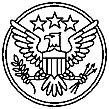NASA Briefings
These are press releases from the National Aeronautics and Space Administration (NASA) public relations desk from the day of the nearly disastrous Atlantis flight.
NASA Brief 18 January 1989, 14:08:00 EST
On the 17th orbit of mission STS-28, at 14:03:34 EST, space shuttle Atlantis had a near collision with a derelict communication satellite.
An electrical discharge from the damaged satellite to the Atlantis caused an electrical fire on board the shuttle, injuring mission specialist Henry 'Hank' Enfield. The electrical surge from the discharge disrupted two of the primary shuttle computers, and destroyed the inertial guidance system and telemetry down-link. Radio communication failed two minutes and four seconds after the discharge. There has been no further contact with the shuttle.
The crew of the Atlantis consists of pilot Captain Steven Melnick, co-pilot Captain Gerard Kenilworth, and mission specialists Susan Lewis, Roger Chong, Henry 'Hank' Enfield, and Dr. Edgar J. Maitland.
The satellite, tentatively identified as the ill-fated Indonesian Palapa B-2, was thought destroyed when the third stage of its Ariane IV launcher exploded in July of last year. The Palapa B-2 was retrieved from an errant orbit in space in November of 1984 by the shuttle Discovery. The Palapa B-2 was originally launched in February, 1984 from the Challenger and failed to reach the correct orbit when its inertial upper stage failed to ignite for the necessary period of time.
NASA Brief 18 January 1989, 14:14:00 EST
Five minutes and forty-nine seconds after a near-collision with a communication satellite, the space shuttle Atlantis has changed its orbital parameters. NORAD radar, tracking the injured shuttle, has confirmed the variation from the planned orbit. There have not been any further communication with the Atlantis since 14:05:38 EST.
NASA Brief 18 January 1989, 14:44:00 EST
The crippled space shuttle Atlantis has passed the apogee of its final orbit before reentry. In the hope that the shuttle's receiver is still operational, ground uplink stations are transmitting contingency plans for an emergency landing. These plans call for an ocean ditching approximately 100 miles east of the Azore Islands in the Atlantic Ocean. The US Navy carrier Forrestal is steaming from its patrol in the Mediterranean. US Air Force rescue teams are already in the air from the US Air Force base at Rota, Spain.
NASA Brief 18 January 1989, 15:08:00 EST
The wounded space shuttle Atlantis reentered the atmosphere at 15:05:45 EST. There has been no contact with the shuttle since two minutes after the collision. Rescue forces from several countries are speeding to the probable impact zone, somewhere in the Atlantic west of Spain.
NASA Brief 18 January 1989, 15:36:00 EST
Pilot Steven Melnick and Co-Pilot Gerard Kenilworth successfully guided the wounded space shuttle Atlantis to a safe touchdown on the runway at the Air Force base at Rota, Spain at 15:27:22 EST. The shuttle, missing several thermal tiles, lost part of the right wing and the payload bay doors during the landing. Secondary explosions created a fire in the payload bay that has yet to be extinguished. The six astronauts escaped the burning vehicle using emergency equipment and are currently being examined by Air Force doctors.
The crew of the Atlantis consists of pilot Captain Steven Melnick, co-pilot Captain Gerard Kenilworth, and mission specialists Susan Lewis, Roger Chong, Henry 'Hank' Enfield, and Dr. Edgar J. Maitland. All appear to be healthy, although suffering from burns and smoke inhalation.
A NASA investigative team is on its way to Rota, Spain to interview the astronauts and to examine the shuttle.
NASA Brief 18 January 1989, 19:52:00 EST
The space shuttle Atlantis astronauts are all in the hospital facilities at the US Air Force Base at Rota, Spain after the successful landing of the crippled shuttle. Pilot Captain Steven Melnick is suffering from first and second degree burns over 5% of his body. Co-pilot Captain Gerard Kenilworth is suffering from first and second degree burns over 15% of his body and smoke inhalation. Mission specialist Susan Lewis is in serious condition with a broken tibia, three cracked ribs, first and second degree burns over 35% of her body, and internal injuries. Mission specialist Roger Chong is in critical condition with a minor concussion, a broken arm, first and second degree burns over 20% of his body, and internal injuries. Mission specialist Henry 'Hank' Enfield is in critical condition, with internal injuries and third degree burns over 40% of his body. Mission specialist Dr. Edgar J. Maitland is in serious condition, with internal injuries and third degree burns over 20% of his body.
Air Force fire crews at Rota Air Force Base have extinguished the fires aboard the wounded shuttle Atlantis. Operations equipment to purge remaining fuels from the maneuvering thrusters and the main engine are en route.
NASA officials are confident that the shuttle can be repaired quickly and returned to service. Officials from the companies involved in the construction of the new shuttle Odyssey, the replacement for the destroyed Challenger, are already studying the repair problems.
Astronaut spokeswoman Janice Harrison said that "this wasn't a problem with the vehicle, like it was with Challenger. As soon as we figure out what we hit and why, we'll be able to prevent this kind of thing from ever happening again."
